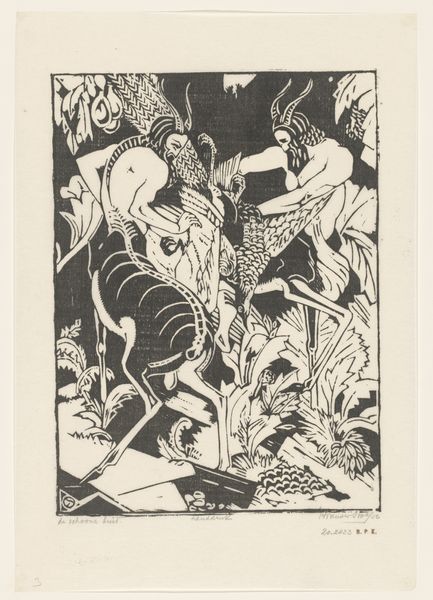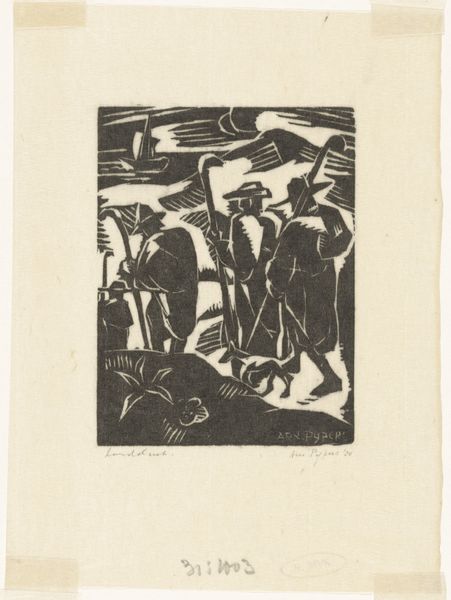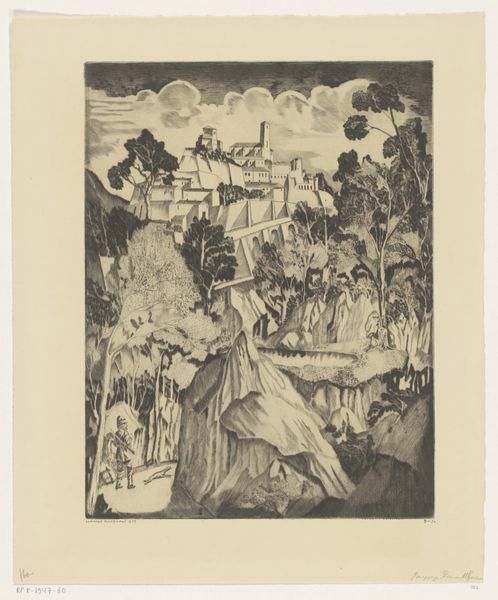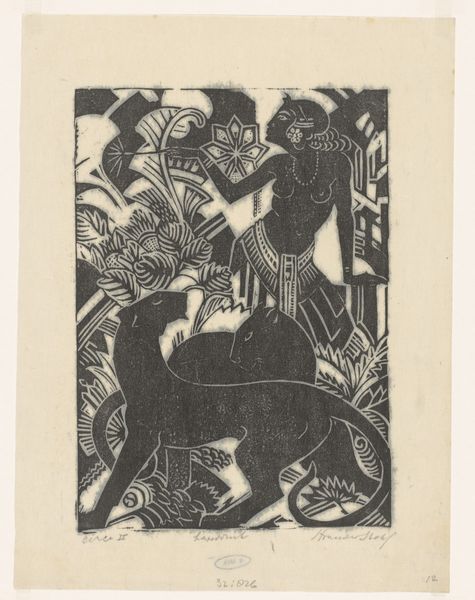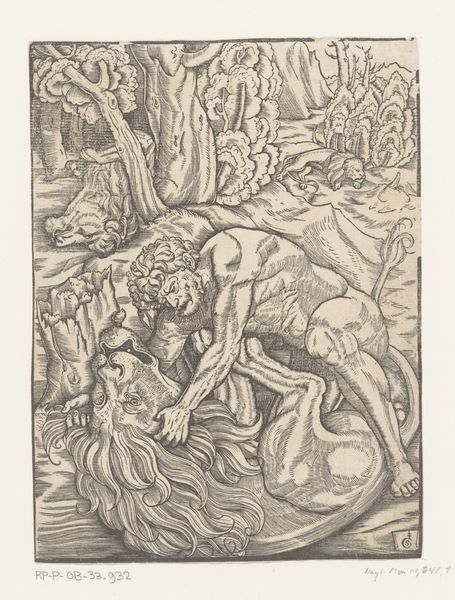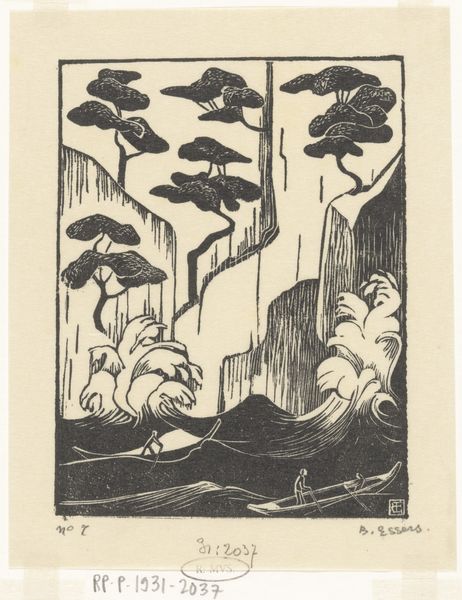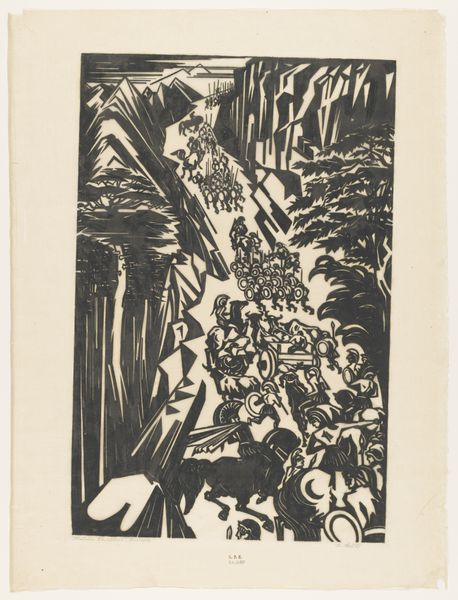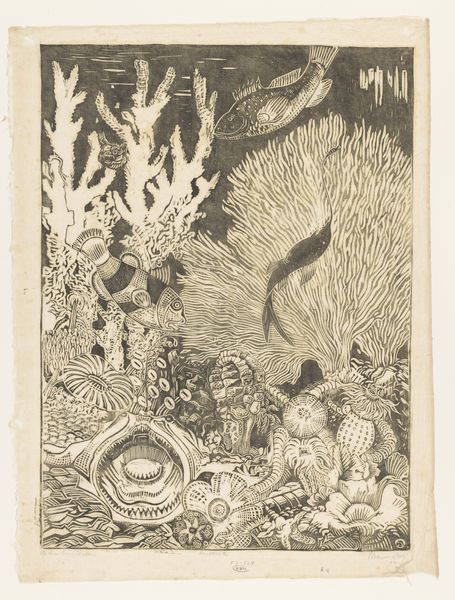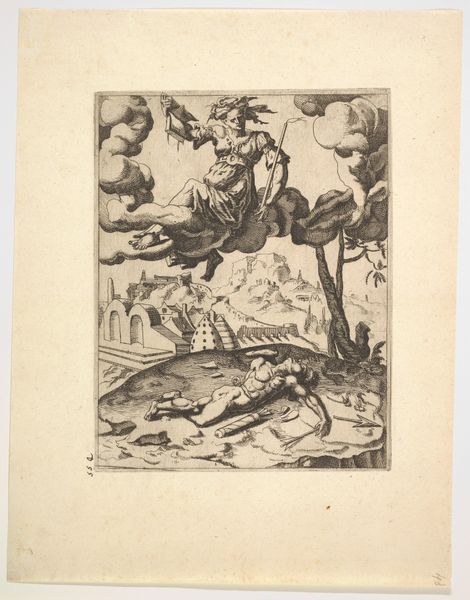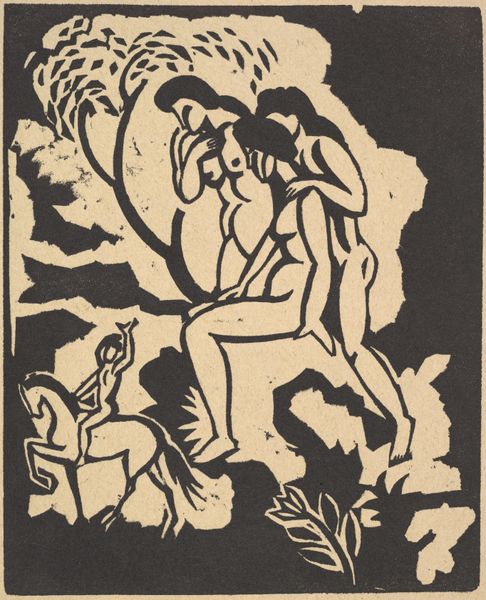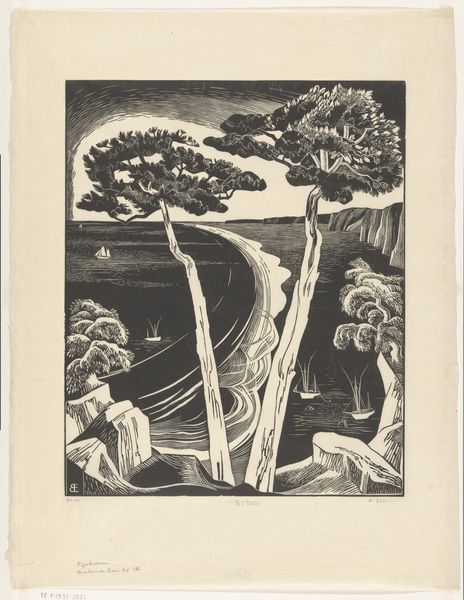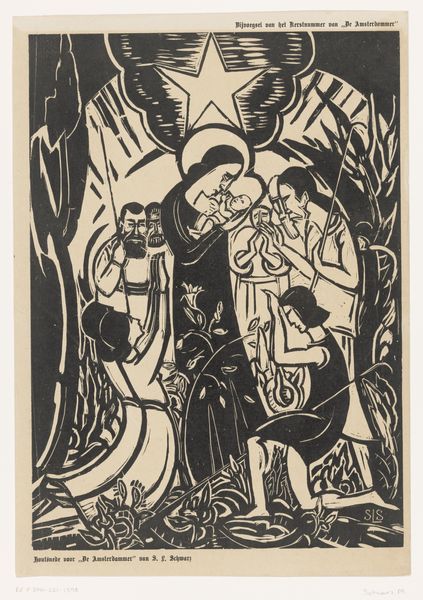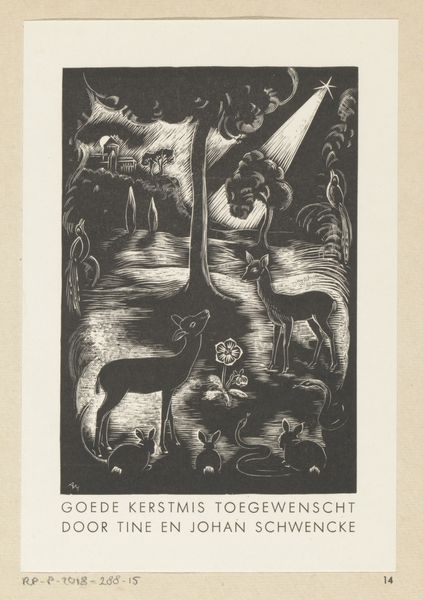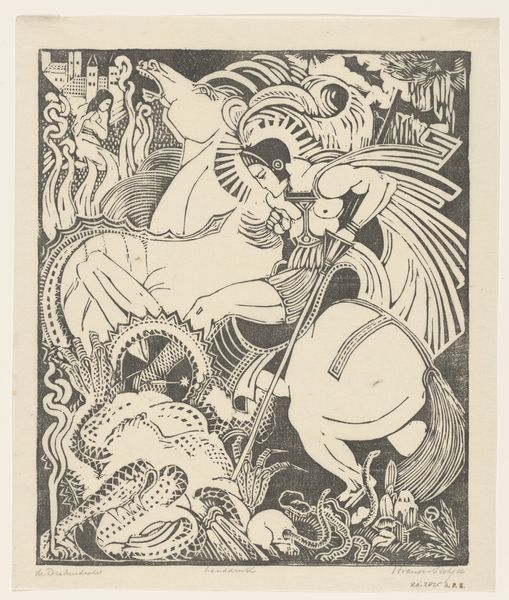
print, woodcut
#
art-nouveau
#
narrative-art
# print
#
old engraving style
#
landscape
#
figuration
#
geometric
#
woodcut
#
symbolism
Dimensions: height 746 mm, width 540 mm
Copyright: Rijks Museum: Open Domain
Editor: This woodcut print from 1920 is called "Optocht van ruiters op het strand," or "Procession of Riders on the Beach," by Bernard Essers. It's such a striking image! The sharp contrast between black and white creates this bold, graphic quality. How do you interpret this work, particularly in its historical context? Curator: It's fascinating, isn't it? The artwork immediately brings to mind the Symbolist movement and Art Nouveau aesthetics, both challenging established artistic norms while deeply invested in subjective experiences and mythology. Essers places his figures in classical garb, juxtaposing them against the sea and a stylised landscape that gives it almost a theatrical stage-like setting. Editor: Yes, a sort of mythological play! Do you think the procession itself might be making a political statement, maybe hinting at nationalism or perhaps even critiquing the established order? Curator: Precisely! Considering the era after World War I, this parade of idealized figures, so seemingly detached from everyday reality, could be read as a commentary on power. It may echo the artist’s response to disillusionment following a brutal war, but also serves as a lens through which to question notions of heroism and social structure. Who gets to ride and who must walk, what kind of performance are these figures enacting for the viewer, and for whom? Editor: So the artwork invites us to consider who holds the reins, literally and figuratively, and what systems support this spectacle. It really pushes beyond just being aesthetically pleasing. Curator: Exactly. This interplay is something Essers makes us think about through the strategic positioning of his figures. It leaves you wondering, doesn’t it? Editor: I'll never look at processions the same way again. It’s more than just riders on the beach. Thanks so much for opening my eyes to that! Curator: My pleasure! It's through these contextual understandings that art truly comes alive, provoking dialogues that transcend time and connect us to the currents of human history.
Comments
No comments
Be the first to comment and join the conversation on the ultimate creative platform.
